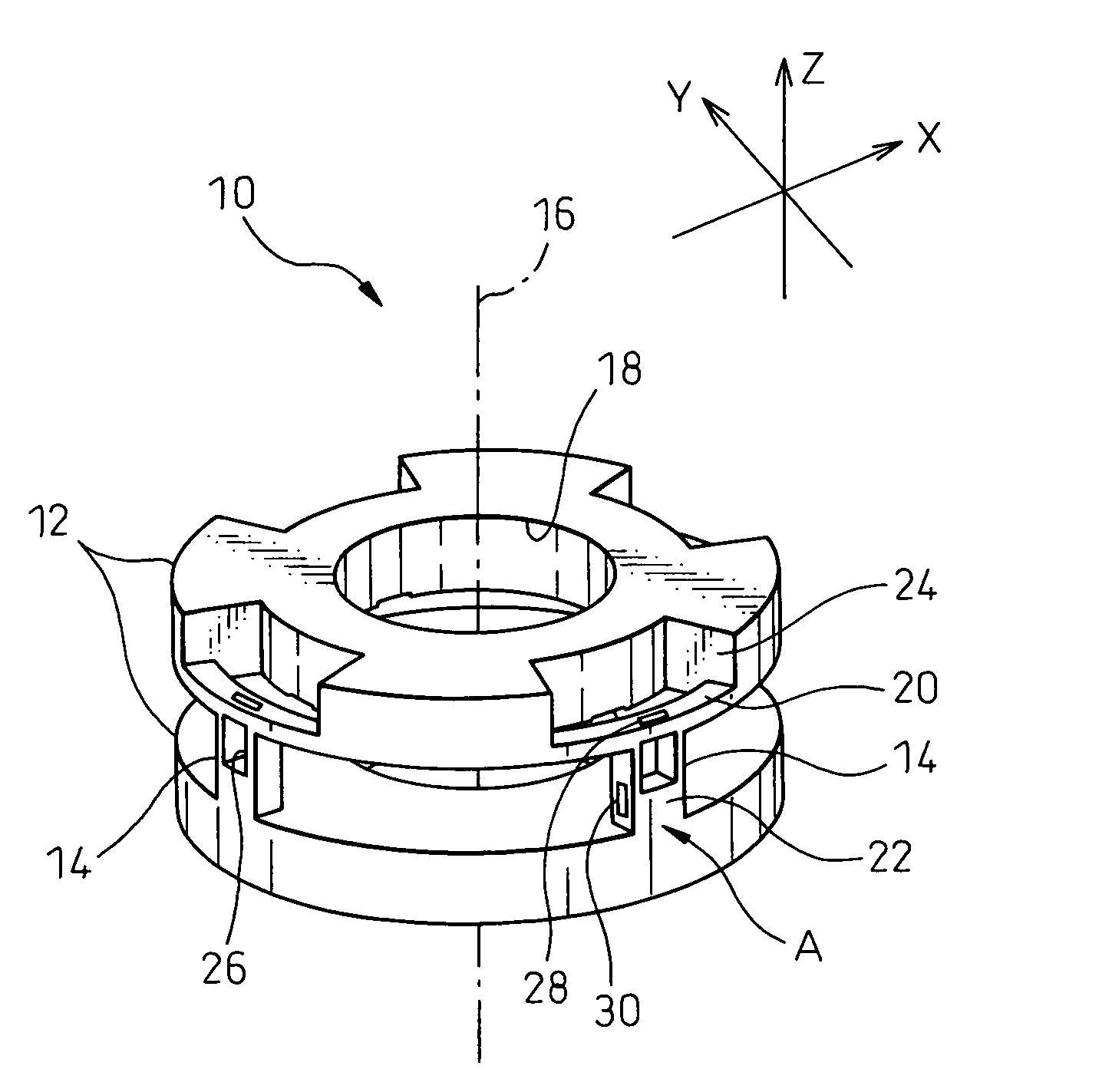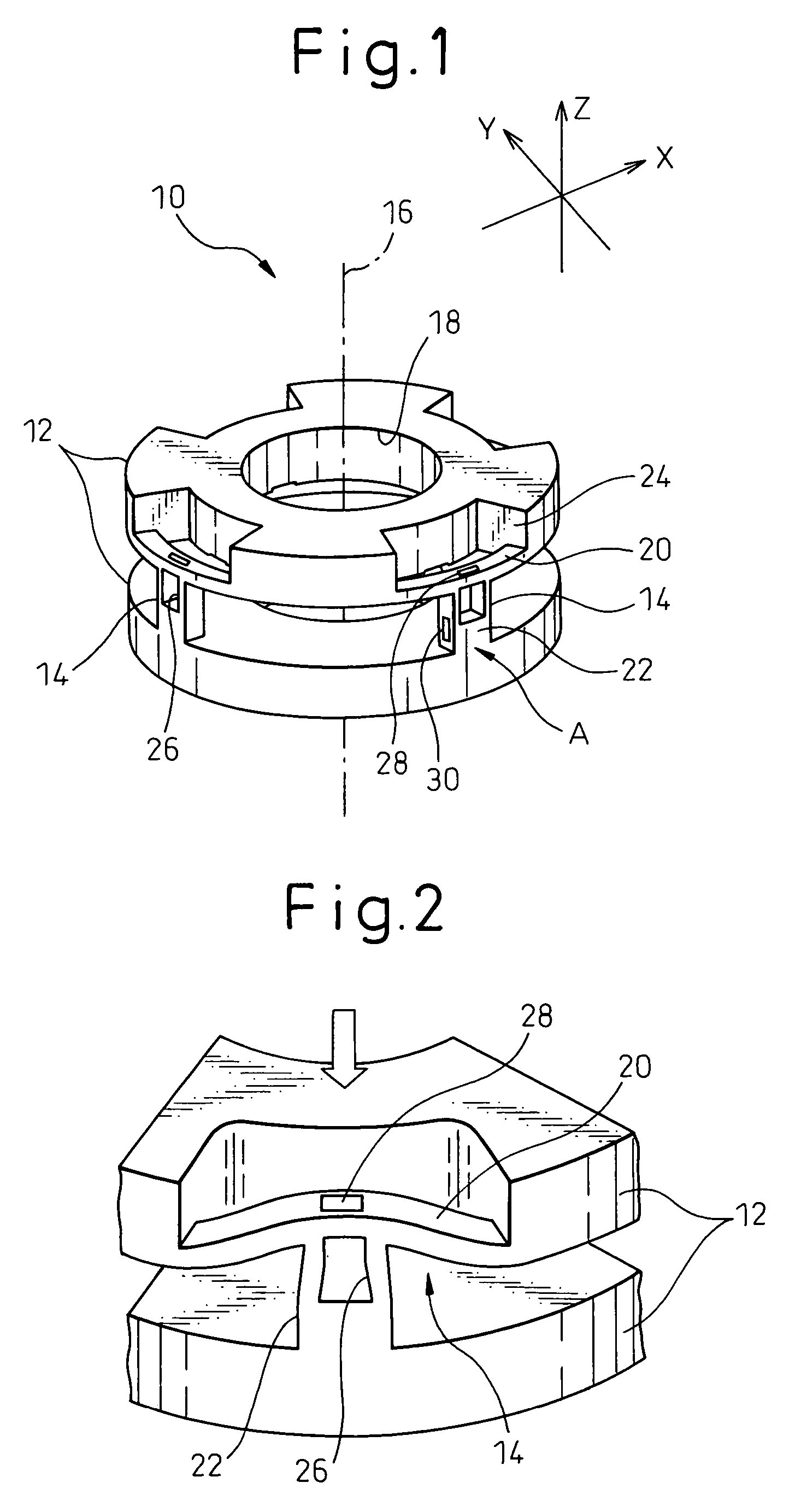Six-axis force sensor
a six-axis force sensor and sensor technology, applied in the direction of force/torque/work measurement apparatus, racket sports, force measurement, etc., can solve the problems of complicated leg machining process, difficult to provide a small robot, and high cost of shear strain gauges, so as to achieve easy generation of deflection, improve the sensitivity of six-axis force sensors to force and a moment, and avoid the effect of assembling process
- Summary
- Abstract
- Description
- Claims
- Application Information
AI Technical Summary
Benefits of technology
Problems solved by technology
Method used
Image
Examples
Embodiment Construction
[0023]Several preferred embodiments of the present invention will be described below with reference to the accompanying drawings.
[0024]FIG. 1 is a perspective view of a six-axis force sensor according to a first embodiment of the present invention. Referring to FIG. 1, a six-axis force sensor 10 includes a pair of disc-shaped members 12 disposed in opposed relation to each other, and legs 14 disposed between the pair of disc-shaped members 12 and connecting the two disc-shaped members 12.
[0025]The pair of disc-shaped members 12 are arranged so that the center axes 16 thereof are aligned in one straight line. The pair of disc-shaped members 12 are mounted to different structures (not shown) and, for example, are positioned at both sides of a joint of a robot. The disc-shaped member12 is formed at the center thereof with a through-hole 18 extending along the center axis 16 thereof. In the through-hole 18, a portion connecting the different structures such as parts of a joint of a robo...
PUM
| Property | Measurement | Unit |
|---|---|---|
| circumference | aaaaa | aaaaa |
| forces | aaaaa | aaaaa |
| external force | aaaaa | aaaaa |
Abstract
Description
Claims
Application Information
 Login to View More
Login to View More - R&D
- Intellectual Property
- Life Sciences
- Materials
- Tech Scout
- Unparalleled Data Quality
- Higher Quality Content
- 60% Fewer Hallucinations
Browse by: Latest US Patents, China's latest patents, Technical Efficacy Thesaurus, Application Domain, Technology Topic, Popular Technical Reports.
© 2025 PatSnap. All rights reserved.Legal|Privacy policy|Modern Slavery Act Transparency Statement|Sitemap|About US| Contact US: help@patsnap.com



